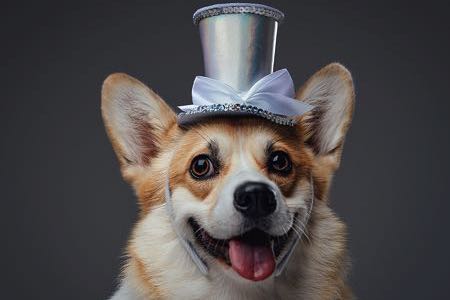 It is not uncommon for people to take their dogs for walks on the grounds of racecourses when there are no races taking place there. It is also far from unheard of that there are some courses where you are allowed to take your dog even when races are ongoing. As a result, there are many people who might be tempted to try to take their dog with them when they get tickets to head to the races during the week of Royal Ascot. The problem is, Royal Ascot uses the Heath, which is where dog walkers would typically look to head to for a walk, so they’re not allowed.
It is not uncommon for people to take their dogs for walks on the grounds of racecourses when there are no races taking place there. It is also far from unheard of that there are some courses where you are allowed to take your dog even when races are ongoing. As a result, there are many people who might be tempted to try to take their dog with them when they get tickets to head to the races during the week of Royal Ascot. The problem is, Royal Ascot uses the Heath, which is where dog walkers would typically look to head to for a walk, so they’re not allowed.
In fact, the only animals that are allowed on the racecourse during Royal Ascot are assistance dogs. That means that any dog that is considered to be a service animal and fits into one of the following categories will be allowed: Registered Guide Dogs, Hearing Dogs and Medical Alert Animals. That is obviously slightly more than just a guide dog for someone with a visual impairment, so you will need to look to see whether your assistance dog fits into the categories here. If so, you’ll be able to take them in with you provided you have the correct documentation.
Ascot Racecourse as a Dog Walking Location
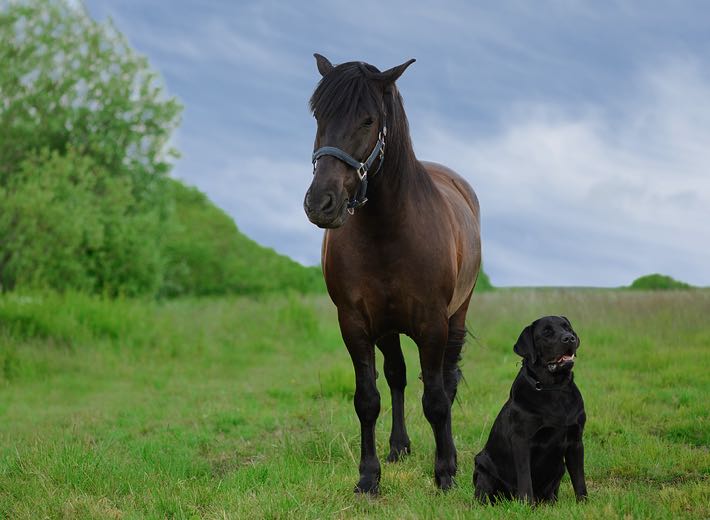
Before we look specifically at Royal Ascot, it is first worth considering Ascot Racecourse as somewhere that you might want to take your dog for a walk at any other time of the year. The Heath is a part of Ascot Racecourse that spans 1.7 miles of circular walkway. It is flat, which perhaps explains why it is where the Ascot Cricket Club is based, with a play area also being located in the middle. This makes it an ideal location for dog walkers to head with their pooches, with entrances to the Heath found courtesy of the tunnel from Ascot High Street and a gate on Kennel Lane.
Whilst the circular walk is 1.7 miles in distance, there are plenty of good paths that lead off the main circuit itself in order to cut the walk down a touch. Whilst you’re walking the Heath you’ll see the likes of the helipad, which is where celebrities and Royals will often arrive by helicopter in order to watch the racing during Royal Ascot week. You will be able to see the Royal Box in the Grandstand, as well as the finishing post where the horses will arrive at the conclusion of races that are run at the venue. The play area in the middle of the Heath is obviously designed for children and is fenced off to stop dogs getting on there.
It is easy enough to understand why it is that the Heath is a popular place for people with dogs to head to if they’re looking to walk their dogs in the Ascot area. Of course, the popularity of the area with fellow dog walkers, runners and parents with young children means that you might not be able to get your dog off the lead if you’re slightly concerned about how they interact with others. Even so, you can head there at any time on non-race days between 6.30 in the morning and 7.30 in the evening. There are a number of dog bins with poo bags located throughout the Heath, which is excellent for those forgetful types.
Can You Go When Racing Is On?
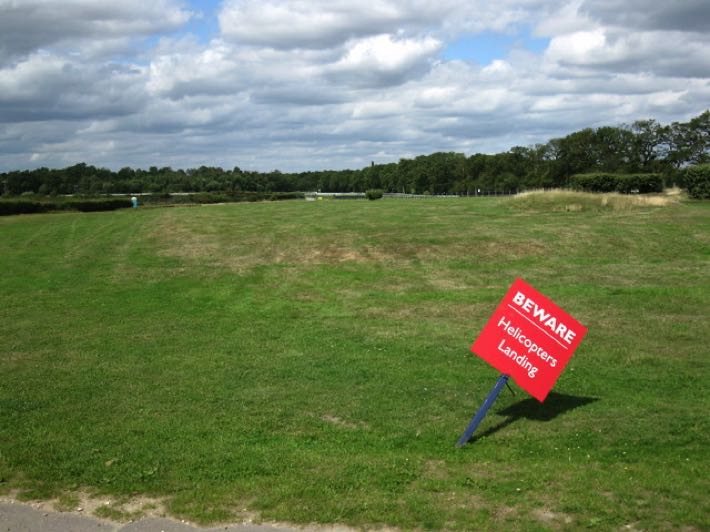
The Heath is open to members of the public all year round, with only certain race days having restrictions put in place. Local residents are able to apply for a ‘Heath Pass’, which will allow them to use the Heath during racing hours. These passes are not available to those aged under 16, who are still able to gain access to the area with an adult that has a Heath Pass. Even those that don’t have a Heath Pass are still able to gain access by filling out a Temporary Pass application, which can be obtained from a member of the Raceday Staff. There are some terms & conditions, which pass applicants agree to as part of taking on the pass.
Racing Hours are considered to be from 12 noon until 30 minutes after the final race has been completed. This can be later if Ascot consider it necessary to alter things due to safety concerns. You are responsible for your own safety, as well as the safety of anyone that goes onto the Heath with you. That means that Ascot nor its employees will accept any liability in the event of an accident or death to anyone that is on the Heath on a race day. There are numerous things that will be considered to be putting you ‘at risk’ during a race day, with the most important as far as we’re concerned being the following: ‘have a dog that is not on a lead at all times‘.
In other words, it is fine to take a dog with you onto the Heath on a race day, but if they’re off lead then they will be considered to be a risk to you and the employees of Ascot Racecourse, which will mean that you will be breaching the terms and conditions of your pass.
Dogs During Royal Ascot
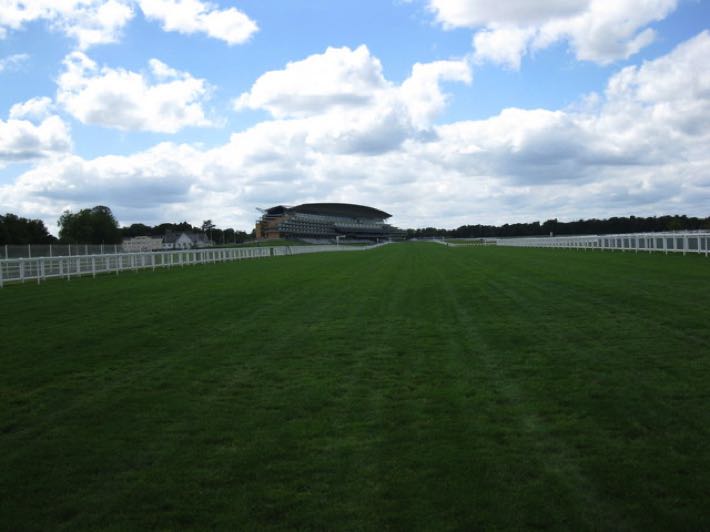
Whilst there is leniency around dogs during race days that are run at Ascot Racecourse, the same isn’t true when Royal Ascot comes around. The rules are changed for this period, which is largely due to the fact that the racecourse sells tickets for the Heath area for Royal Ascot that it doesn’t do during other race days. It is open every day, but you’ll need to have a ticket to go on it and part of the terms and conditions of buying a ticket is that you won’t be allowed there with a dog that isn’t an assistance dog in one of the forms mentioned earlier on this page.
The terms and conditions for Ascot Racecourse states the following in Part 1 Section 11:
Animals other than those competing, those required for disabled assistance, or those specifically authorised by ARL are not allowed on any part of the Racecourse. Where dogs are permitted they must be kept on leads at all times and must not be allowed to foul anywhere on the Racecourse. To the extent we are legally able to do so, we reserve the right, if necessary, to force entry into a car to release animals which may be suffering, and we shall not be liable for any damage to property arising from any such forced entry.
This means that you can’t bring a dog onto the course, but if you only find that out when you get to the racecourse and therefore decide to leave your dog in your car whilst you go to watch the racing, there is a real chance that your car will be broken into in order to release the dog for safety. This, of course, is a good rule of thumb for dogs at all times: if you leave them in a car then you’re putting them in danger and can’t be surprised if a member of the public decides to smash one of your windows in order to save the dog from over-heating or being put in danger.
Ascot Uses Dogs in Its Advertising
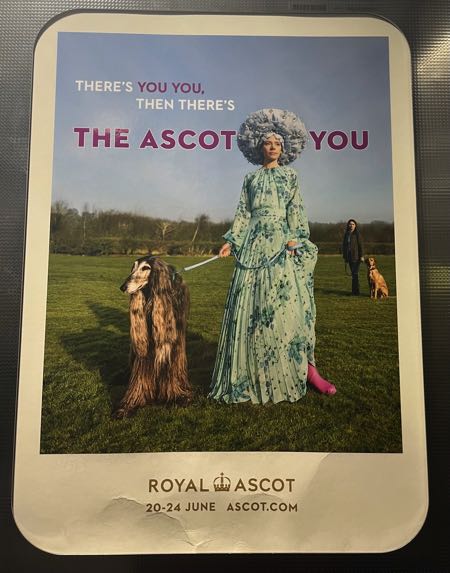
Part of the reason for the confusion over dogs and Royal Ascot is the fact that Ascot Racecourse Limited will occasionally use pictures of dogs in its advertising for the event. It is not uncommon to be on the tube in London’s underground and see an advert for Royal Ascot with a cute looking dog either being walked or held by someone dolled up to the nines, as you’d expect punters to be over Royal Ascot week. This can obviously be confusing for people who might want to take their dogs with them when attending Ascot Racecourse during the week of racing.
Unfortunately, it is part of a marketing trick that is designed to remind you of the sort of people that might get dressed up and take their small dog with them. To put it bluntly: rich people. Events, such as Royal Ascot are aspirational in nature, which is why so many people like to attend and get dressed up in their morning suit or fancy dress and head to the Royal Enclosure during a week of racing that will often see members of the Royal Family in attendance. What it won’t see is dogs at the racecourse, simply because they aren’t allowed in spite of what the adverts suggest.
The Dogs That Are Allowed
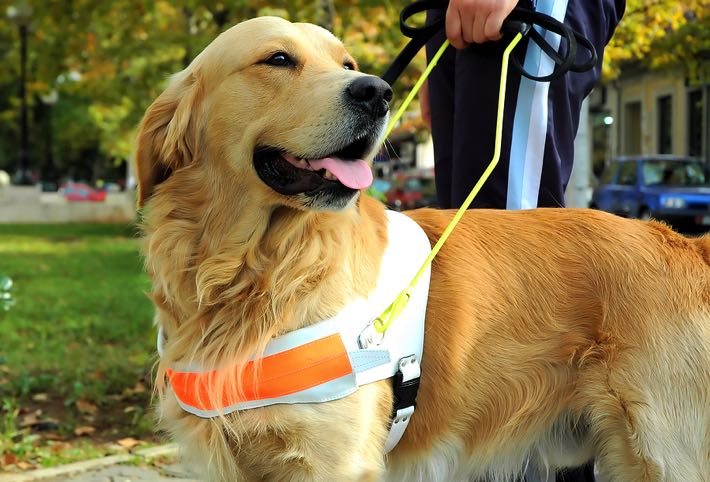
Whilst you might not be able to take the family pet with you to Ascot Racecourse during the week of Royal Ascot, what you might well see around the place should you head there for the racing is any number of service dogs that people need in order to be able to live their lives in as normal a fashion as possible. This means that those with visual impairments can be guided around the place by their trained assistance dogs, whilst those with hearing dogs can have them with them in order to ensure that they get as much enjoyment out of the event as possible.
Hearing dogs are trained to be able to help those with hearing problems hear sounds that they might otherwise miss. Whilst this is normally the likes of door bells, alarms, a baby’s cry or a telephone ringing, an event like Royal Ascot will have all sorts of possible sounds that an assistance dog might help their owner interpret. Similarly, those with Medical Alert Assistance Dogs require their dog to be with them in case they have an impeding ‘life-threatening medical event’ that they aren’t aware of. Such dogs are able to use their sense of smell for conditions, such as the following:
- Postural Orthostatic Tachycardia Syndrome (PoTS)
- Addison’s disease
- Severe allergies
- Type 1 diabetes
- Other endocrine disorders
- Episodes of sudden health deterioration
Should a dog identify such a medical emergency, they are able to flag this up to their owners who can then seek the care and support of the staff working at Royal Ascot. Regardless of the reason a dog is being used for medical purposes, their very presence allows their owner to live a life as close to normal as possible, which is why Royal Ascot makes an exception to the dog rule for such pooches during the most prestigious week of the year for the racecourse. Whilst they will look like any normal dog, you must remember not to approach them unprompted.
This can be especially hard when the owners of assistance dogs will often go out of their way to ensure that they fit in normally during Royal Ascot. The week is one in which the humans dress up smartly, so why should their canine companions be any different? You might well see dogs walking around with fascinators in their hair or top hats on. It isn’t unusual for a doggo to be wearing a fancy suit that matches their owners. In 2017, one dog was dressed in a regal looking red-feathered turban, but that doesn’t mean that they’re to be stroked without speaking to their owners first. If they say no, remember it isn’t personal.